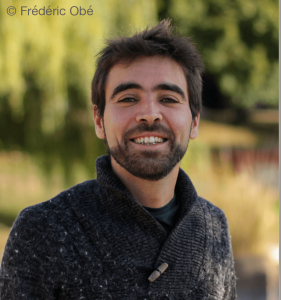Welcome to the PoreLab lecture with Dr. Tomás Aquino.

When: March 29th at 13:00 (Oslo time)
Where: https://uio.zoom.us/j/65837085049?pwd=WjZianUyN3FJa2liQkxBbzQrOCtGdz09
Title: Mixing, delay, and restart — Fluid-solid reaction efficiency in incompletely-mixed porous media
Abstract:
Biogeochemical reactions at the interface between the fluid and solid phases are central to a wide range of natural and engineered processes in porous media, ranging from natural nutrient cycles to groundwater remediation. While traditional models employ reaction rate estimates based on laboratory measurements under well-mixed conditions, transport limitations in heterogeneous media can lead to local depletion of reactants, especially when the chemical kinetics are fast. This leads to the observation of reaction rates that are often significantly lower across laboratory and field-scale solute plumes. Modeling the role of medium structure and flow in dictating mixing and reaction rates is thus fundamental for accurate predictions of reaction rates, but it remains a major challenge.
In this talk, I will discuss the modeling of fluid-solid reaction rates subject to transport limitations in terms of reaction delay, induced by the duration of solute excursions to the reactive interface. The statistics of these excursions are a consequence of medium geometry along with transport and mixing properties. I will discuss the role of flow and mixing in the context of chaotic advection in saturated porous media. Chaotic advection has been recently observed in three-dimensional porous media, and theoretical arguments suggest it may be the norm rather than the exception. Its impact on reaction rates can be modeled with recourse to a stochastic restart model that mimics efficient mixing due to chaotic exploration of the pore space. It is known that restart can increase search efficiency. This leads to a corresponding impact on reaction efficiency, which is dictated by available surface area, flow rate, and interface shear, but independent of the details of chaos. Finally, I will discuss current perspectives for the modeling of incompletely-mixed reaction rates in unsaturated porous media.
About Dr. Tomás Aquino
Tomás Aquino is a Permanent Researcher at the Institute for Environmental Assessment and Water Research (IDAEA), which is part of the Spanish National Research Council (CSIC). His research interests revolve around modeling physical processes with recourse to stochastic methods, both by analytical and computational means. In particular, his work focuses on developing models of transport, mixing, and reaction for surface and subsurface hydrological systems that aim to capture heterogeneity across scales through the use of stochastic descriptions. He obtained his Undergraduate and Master’s degrees in Theoretical Physics at the University of Lisbon, Portugal, and his PhD in the Civil and Environmental Engineering and Earth Sciences at the University of Notre Dame, IN, USA. As a postdoctoral researcher, he held a Marie Skłodowska Curie fellowship for the project ChemicalWalks, which developed new theoretical and computational approaches to quantify chemical reactions under incomplete mixing in porous media. He has also worked on the application of stochastic modeling techniques to gene expression in biological cells, epidemic spreading on adaptive networks, and the dynamics of multi-strain diseases such as influenza
